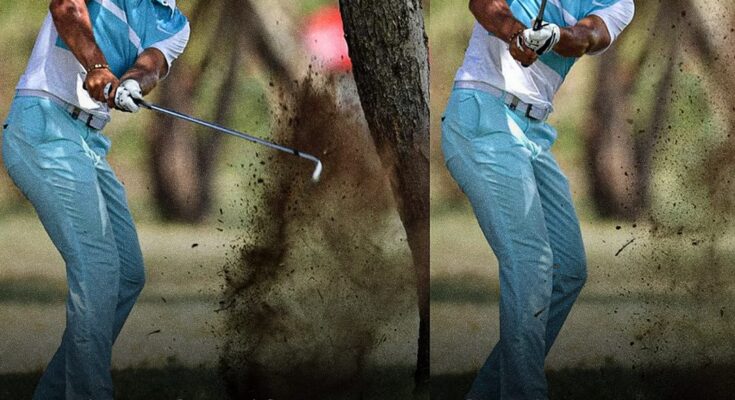There’s something really satisfying about applying the Rules of Golf to gain an advantage.
Want an example? Before winning the 2025 U.S. Open, J.J. Spaun was a contender at the Players Championship in March. During the final round, his second shot on the par-5 ninth hole at TPC Sawgrass came to rest in thick rough near a group of sprinkler heads. One of them interfered with his next shot, so he was able to take a drop that gave him a better lie. But wait, there’s more! When he dropped, another sprinkler head now interfered with his next shot, so he was able to drop again, free of charge. And guess what? The next drop took him from burried in deep grass to the fairway.
And guess what happened next? Because he dropped twice in the fairway on a slope, the ball rolled out of the designated area, so he was able to place the ball in a near perfect lie. Pretty smart, right?
All of this is possible because the general area of the course, as defined in the rule book, doesn’t differentiate between fairway, fringe, first cut or thick grass. As long as you drop within one clublength of the nearest point of reilef, no closer to the hole, you’re absolutely allowed to move into a better lie in the general area.
That’s an example of using the rules to your advantage, which brings us to the issue in the headline of this article.
Let’s role play: You’re a right-handed golfer who hits a shot in the left rough that comes to rest next to a tree. You could play a right-handed shot, but you can get more club on the ball if you flip the club over and swing left-handed like Thorbjorn Olesen is doing in the images above.
Now here’s the cool part. By deciding to play a shot left-handed, you happen to be standing on a sprinkler head when you take your stance. And since sprinkler heads are immovable obstructions—as Spaun knew at the Players—you can now take relief that gets you far enough away from the tree where you can now swing right-handed. All of this legal (Rule 16.1a(3)/1).
Where you might get in trouble also falls under Rule 16. If the shot you are electing to play is clearly unreasonable, then you can’t take relief. An example might be when your ball is close to the green and a narrow stance for a chip shot is the normal play, but you say you’re going to hit a flop shot with a wide stance that puts your foot on a sprinkler head. No one hits a flop shot from that close to the green (right, Phil?), making that play clearly unreasonable.
Getting back to the scenario above, you also couldn’t get that relief if the left-handed shot really wasn’t necessary, and you were just declaring you wanted to play it that way because you knew it would get you on the sprinkler head. If the lefty shot makes sense to advance the ball, you’re good to go. If it doesn’t make sense, you have to play the ball as it lies or take an unplayble-lie penalty and proceed under Rule 19.
MORE GOLF DIGEST RULES REVIEWS
What do I do if my ball just hit another ball on the green?
What happens if my three-minute search for a lost ball gets interrupted?
I hit myself with my own ball. Is that a penalty anymore?
What exactly is an embedded ball?
Touching the green to see if it’s wet: Penalty or no?
I hit a horrible shot. I’m way better off if I don’t find it. Can I just declare it lost?
Does a ball have to be unplayable to declare it unplayable?
I accidentally hit my ball with a practice stroke … does it count?
I’m on the green. My opponent is not. Who’s away?
I bent my putter and it actually works better. Can I still use it?
Somebody just picked up my golf ball! Now what?

